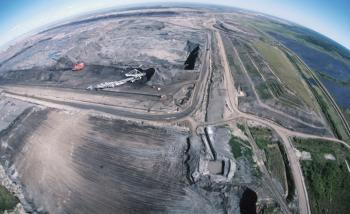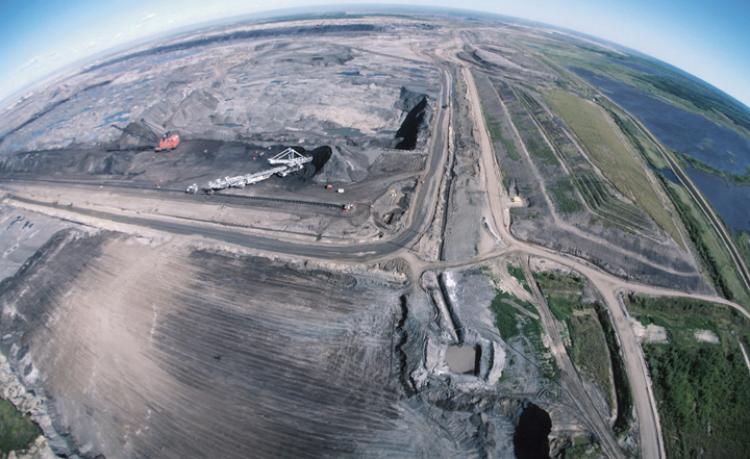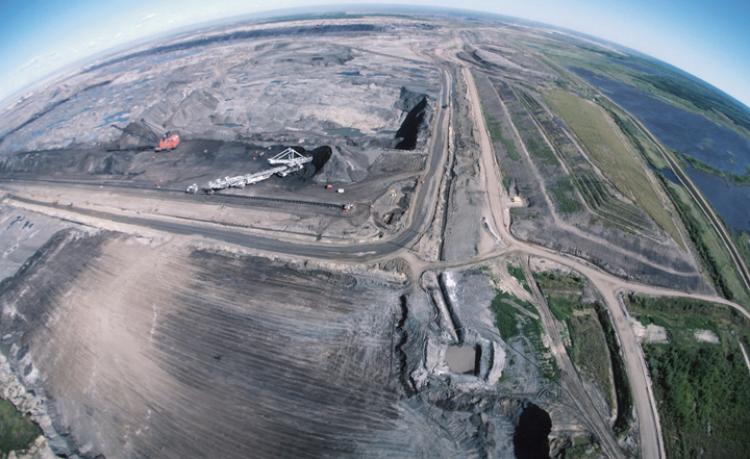Residents of Buchans, a community of just under 900 in central Newfoundland, are grappling with the news that they are in danger of being poisoned by lead and other toxic metals.
Officials have urged all residents to have their blood tested to determine what levels of lead may be present. Buchans was home to a lead and zinc mine that operated for over 60 years. It shut down in 1984.
Tests done on the soil found dangerously high levels of lead, along with nine other toxic substances, including arsenic, barium, and thallium. The biggest concern is the lead, which is especially toxic to the fetus and children, and can cause permanent learning and behavioural disorders.
“It’s disappointing and I’m sure disturbing for the residents to find out that they have over time been exposed to very high levels of lead,” says Inka Milewski, science adviser and health-watch director with the Conservation Council of New Brunswick.
Three Newfoundland government cabinet ministers travelled Buchans to deliver the results of testing done on and around the mine site. The surrounding soil has been contaminated, and residents were told that they’ve been breathing in pollutants from the site for years.
However, Environment Minister Charlene Johnson said in a statement that while “several of the heavy metals tested in the Buchans area have exceeded the recommended guidelines, it does not necessarily mean the soil is dangerous or that there is a health hazard.”
Milewski, author of the report Dying for Development: The Legacy of Lead in Belledune, calls Johnson’s statement “irresponsible.”
“Lead is a neurotoxin, it affects brain development, and unless you do some kind of health assessment of the residents one cannont say there are no effects,” she says.
“There are literally thousands of scientific studies indicating that even extremely low levels of lead in the blood affect children’s development, not only their cognitive and behavioural development but in some cases their physical development.”
Milewski is well aquainted with lead poisoning, having carried out soil testing on properties surrounding the Belledune lead smelter in New Brunswick. She also conducted peer reviews on government health risk assessments for the lead smelter in Port Coburn, New Brunswick, and the copper and nickel mine in Sudbury, Ontario.
For years, Buchan residents and officials have been calling for the abandoned mine site, which stretches over eight square kilometres around the perimeter of the town, to be cleaned up. Preliminary testing was finally carried out this summer.
Known as Lucky Strike, the mine opened in 1908 and became fully operational in the 1920s. Mine owners AbtibiBowater and the American Smelting and Refining Company (ASARCO) built Buchans at the government’s expense, and the town was owned and controlled by the companies until the late 1970s.
AbitibiBowater said it was planning to put more than $2 million into a clean-up. However, that failed to materialize and the company declared bankruptcy earlier this year. ASARCO, which went bankrupt in 2005, left abandoned mine sites in the United States that will cost taxpayers an estimated $7 billion to clean up, according to news reports.
Milewski says there are mining communities across Canada where high levels of lead have been discovered on school grounds.
“You name the community with a particular mining or smelter operation and you have contamination, and those companies may be long gone but who is left holding the bag in terms of their health—the residents.”
She says there should be “some kind of a bond that these large scale companies need to secure with the government which ensures that there will be funds and compensation available in the event that there are health problems and environmental problems.”
This week, Port Coburn residents began court proceedings alleging that emissions from the smelter have contaminated and devalued their properties.
The Newfoundland government has promised to start cleaning up the Buchans site in the spring of 2010. This, said Buchan’s Mayor Derm Corbett, is “the best news we’ve gotten in years.”
“It was devastating to the community that it looked like another generation of Buchans residents would have to live with this,” Corbett told CBC News.
Cleaning up is the easy part, says Milewski. Determining the adverse health effects from long term exposure to lead and other toxic metals, however, can be “very complex.”
“The residents of Buchans are just beginning what I know will be a long journey.”
Officials have urged all residents to have their blood tested to determine what levels of lead may be present. Buchans was home to a lead and zinc mine that operated for over 60 years. It shut down in 1984.
Tests done on the soil found dangerously high levels of lead, along with nine other toxic substances, including arsenic, barium, and thallium. The biggest concern is the lead, which is especially toxic to the fetus and children, and can cause permanent learning and behavioural disorders.
“It’s disappointing and I’m sure disturbing for the residents to find out that they have over time been exposed to very high levels of lead,” says Inka Milewski, science adviser and health-watch director with the Conservation Council of New Brunswick.
Three Newfoundland government cabinet ministers travelled Buchans to deliver the results of testing done on and around the mine site. The surrounding soil has been contaminated, and residents were told that they’ve been breathing in pollutants from the site for years.
However, Environment Minister Charlene Johnson said in a statement that while “several of the heavy metals tested in the Buchans area have exceeded the recommended guidelines, it does not necessarily mean the soil is dangerous or that there is a health hazard.”
Milewski, author of the report Dying for Development: The Legacy of Lead in Belledune, calls Johnson’s statement “irresponsible.”
“Lead is a neurotoxin, it affects brain development, and unless you do some kind of health assessment of the residents one cannont say there are no effects,” she says.
“There are literally thousands of scientific studies indicating that even extremely low levels of lead in the blood affect children’s development, not only their cognitive and behavioural development but in some cases their physical development.”
Milewski is well aquainted with lead poisoning, having carried out soil testing on properties surrounding the Belledune lead smelter in New Brunswick. She also conducted peer reviews on government health risk assessments for the lead smelter in Port Coburn, New Brunswick, and the copper and nickel mine in Sudbury, Ontario.
For years, Buchan residents and officials have been calling for the abandoned mine site, which stretches over eight square kilometres around the perimeter of the town, to be cleaned up. Preliminary testing was finally carried out this summer.
Known as Lucky Strike, the mine opened in 1908 and became fully operational in the 1920s. Mine owners AbtibiBowater and the American Smelting and Refining Company (ASARCO) built Buchans at the government’s expense, and the town was owned and controlled by the companies until the late 1970s.
AbitibiBowater said it was planning to put more than $2 million into a clean-up. However, that failed to materialize and the company declared bankruptcy earlier this year. ASARCO, which went bankrupt in 2005, left abandoned mine sites in the United States that will cost taxpayers an estimated $7 billion to clean up, according to news reports.
Milewski says there are mining communities across Canada where high levels of lead have been discovered on school grounds.
“You name the community with a particular mining or smelter operation and you have contamination, and those companies may be long gone but who is left holding the bag in terms of their health—the residents.”
She says there should be “some kind of a bond that these large scale companies need to secure with the government which ensures that there will be funds and compensation available in the event that there are health problems and environmental problems.”
This week, Port Coburn residents began court proceedings alleging that emissions from the smelter have contaminated and devalued their properties.
The Newfoundland government has promised to start cleaning up the Buchans site in the spring of 2010. This, said Buchan’s Mayor Derm Corbett, is “the best news we’ve gotten in years.”
“It was devastating to the community that it looked like another generation of Buchans residents would have to live with this,” Corbett told CBC News.
Cleaning up is the easy part, says Milewski. Determining the adverse health effects from long term exposure to lead and other toxic metals, however, can be “very complex.”
“The residents of Buchans are just beginning what I know will be a long journey.”







